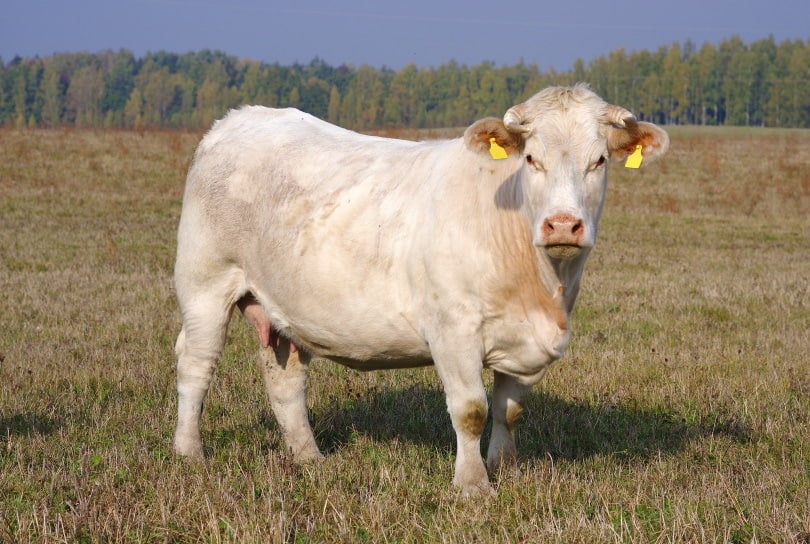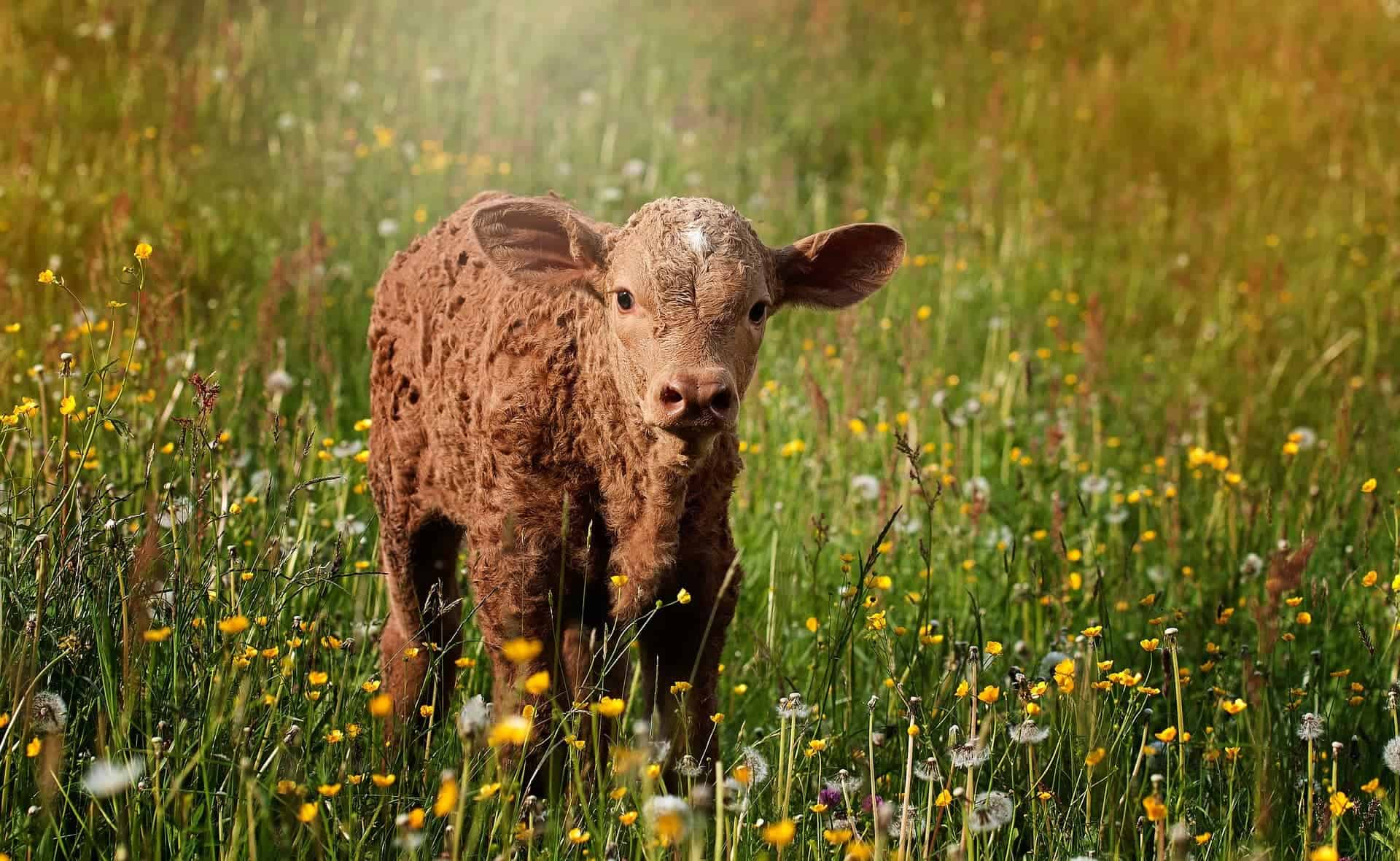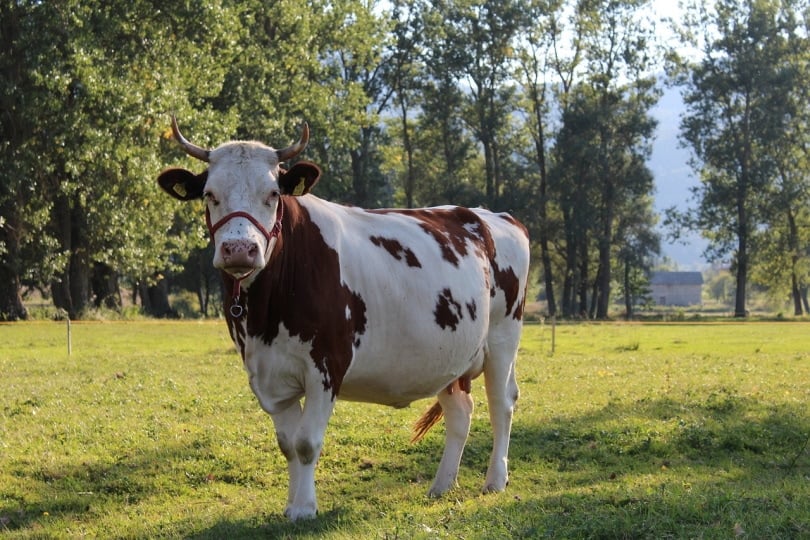There are herds of cattle in every single state here in the United States. But have you ever stopped to think about whether you’ve ever seen a cow die from old age? We understand that not all of us are farmers and have such close access to these animals. However, there aren’t many media stories about how a cow died peacefully after a long life of grazing in an open field. The lifespan for cows, in general, is between 15 and 20 years, but they don’t even get to fully mature before they get sent to slaughter. 
What’s the Average Lifespan of a Cows?
When we are talking about farm cattle, most of them do not die from old age. If we allowed cattle to live out their entire lives, most would live for anywhere between 15 and 20 years.
The age of a cow gets cut short based on what they were bred to do. For example, most dairy cows get slaughtered once they are about six years old or when they can no longer produce milk. On the other hand, beef cows face a much more gruesome fate, and most are sent to be killed when they are between the ages of six months and one year old.
And what about the calves? The time that a calf spends on a farm depends on its gender. Many are sold to either beef or dairy farms. The rest, unfortunately, are raised for veal production. They usually get separated from their mothers only three days after being born and then confined to small hutches. The veal calves are usually killed between the ages of 16 and 18 weeks.
Why Do Some Cows Live Longer Than Others?
1. Gender

By now, you’ve already figured out the main indicator for how long an animal will live depends on their gender. Males are doomed from the start. Most of them will be sent to beef farms and get slaughtered before they are a year old. Females are almost always used for dairy farming and breeding. They are the lucky ones who get to live for an average of six years.
2. Infertility
Farming can be a disturbing industry because if the animals don’t perform, then the farmer cannot make money and has no use for them. Infertility for a dairy cow is a death sentence. To produce milk, cows must give birth, and what use would a dairy farmer have for them if they can’t perform? It’s heartbreaking but part of the harsh reality of dairy production.
3. Lameness

Lameness is almost always contributed to the conditions that the cattle are raised in. This is especially true in factory farms where thousands of cows are crowded into tight, indoor spaces. Over time, their hooves get ulcers, and they don’t have opportunities to exercise. Eventually, the lameness can trigger infections, and the cows are forced to be put down.
4. Mastitis
Infected mammary glands are caused by bacterial infections. In fact, mastitis has been costing the industry billions of dollars each year. However, nobody wants to address that mastitis usually happens because the heifers are lying in soiled bedding or being milked with contaminated equipment.
5. Castration

Life for a bull is already hard, but it becomes even worse if the castration process doesn’t go smoothly. All males chosen for meat production get castrated with a tight ring that cuts off circulation to the scrotum. When not performed correctly, this can cause sickness and infection.
6. Disbudding
Disbudding is a process where calves have their horns removed. The process sometimes involved burning the horns away with acid or cutting them off. This leaves open wounds on the top of their heads that invite infections and can cause loads of other painful complications.
7. Tail-docking
Tail-docking is not necessary, yet some farmers insist on doing so to make the milking process easier. This is not only painful for the animals, but it can cause health issues. Docking has been banned in some countries, but both the United States and Canada still allow it.

The 5 Life Stages of a Dairy Cow

1. Newborn
The average newborn calf is born and weighs around 90 to 100 pounds when it is born. Newborns are typically fed colostrum milk for their first three days of life to give them extra nutrients. They may also be fed a starter grain when they are between seven and ten days old. Calves are weaned from milk between four and eight weeks old.
2. 6 Months
Heifers that are six months old eat a mixture of silage, grain, and hay. They start to weigh around 400 pounds and gain at least one pound per day.
3. Yearlings
Cows are given this name once they are over one year old. At this point, they have started to put on an extra few hundred pounds and still have quite a bit of growing to do before they are sent into a milking herd.
4. 2 Years
Once a cow is two years old, they are referred to as a first-calf heifer. They are ready to get pregnant and start producing milk for the next few years until she is fully mature.
5. Mature Cow
Adult dairy cows often weigh over 1,500 pounds. They are usually between four and six years old. A single, mature cow eats over 100 pounds of feed a day and produces 12 gallons of milk per day in the earliest part of her lactation.

How To Tell Your Cow’s Age

There aren’t very many accurate ways to determine the age of a cow. The most common method is by examining their teeth. The cows are often placed in a cattle crush to keep them from moving while their mouth is inspected. The number of teeth in their mouths is the easiest way to determine a cow’s age. Here is a guide for reference:
- 12 months: All calf teeth are in place where they need to be.
- 15 months: The permanent incisors appear
- 18 months: Permanent incisors show signs of wear
- 24 months: First intermediate teeth show up
- 30 months: Six broad incisors show up
- 36 months: Six incisors show signs of wear
- 39 months: Corner teeth show up
- 42 months: Eight broad incisors show signs of wear

Conclusion
It’s a painful truth that cows are given a hard life from the moment they are born. Even though many of them could live up to 20 years, their lives are slashed to a fraction of that because of how they fit into our demanding world of meat and dairy production. We hope that this article has given you some insight into the realistic age that cows live and some of the factors that play a role in their deaths.
- In case you were wondering: How Many Cows Are There In The US?
Featured Image Credit: AnitaBozic, Pixabay
